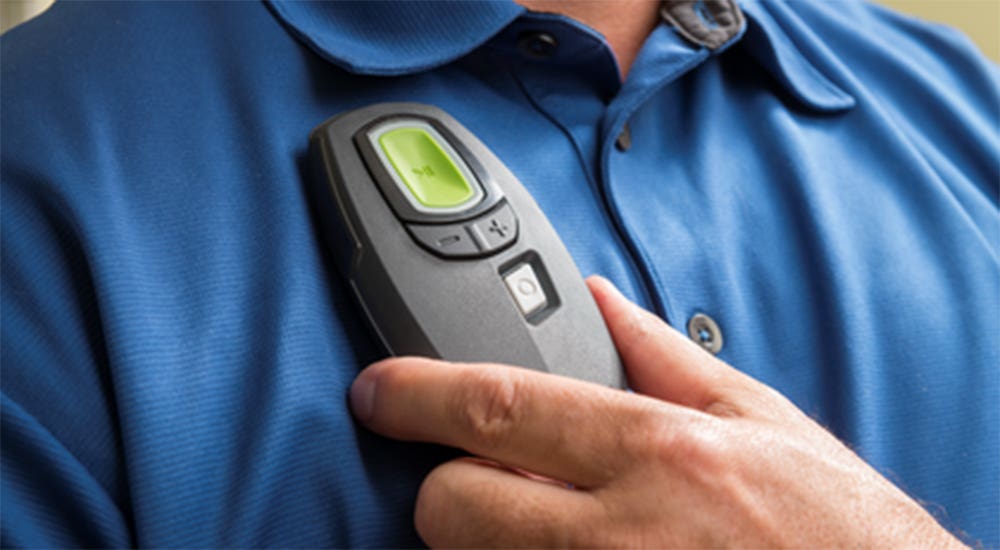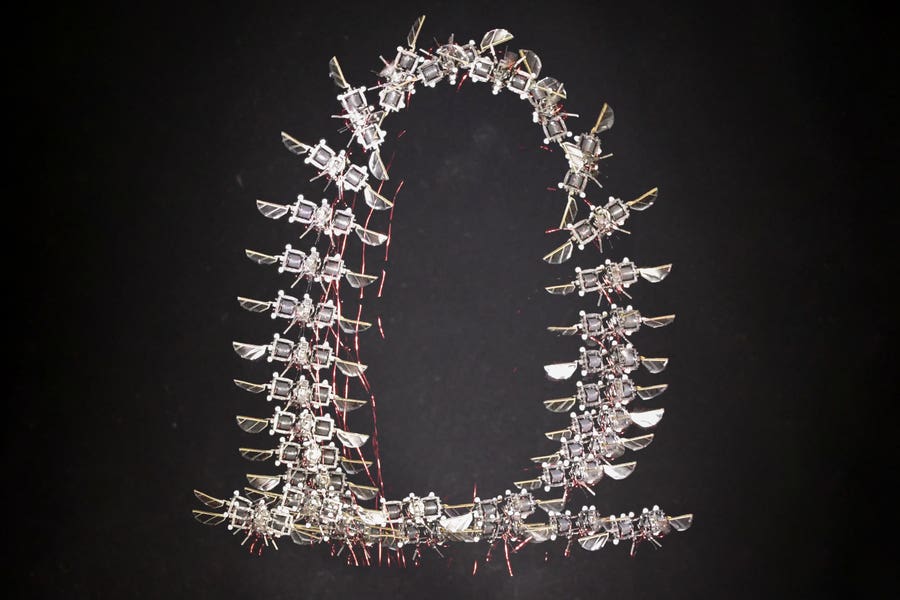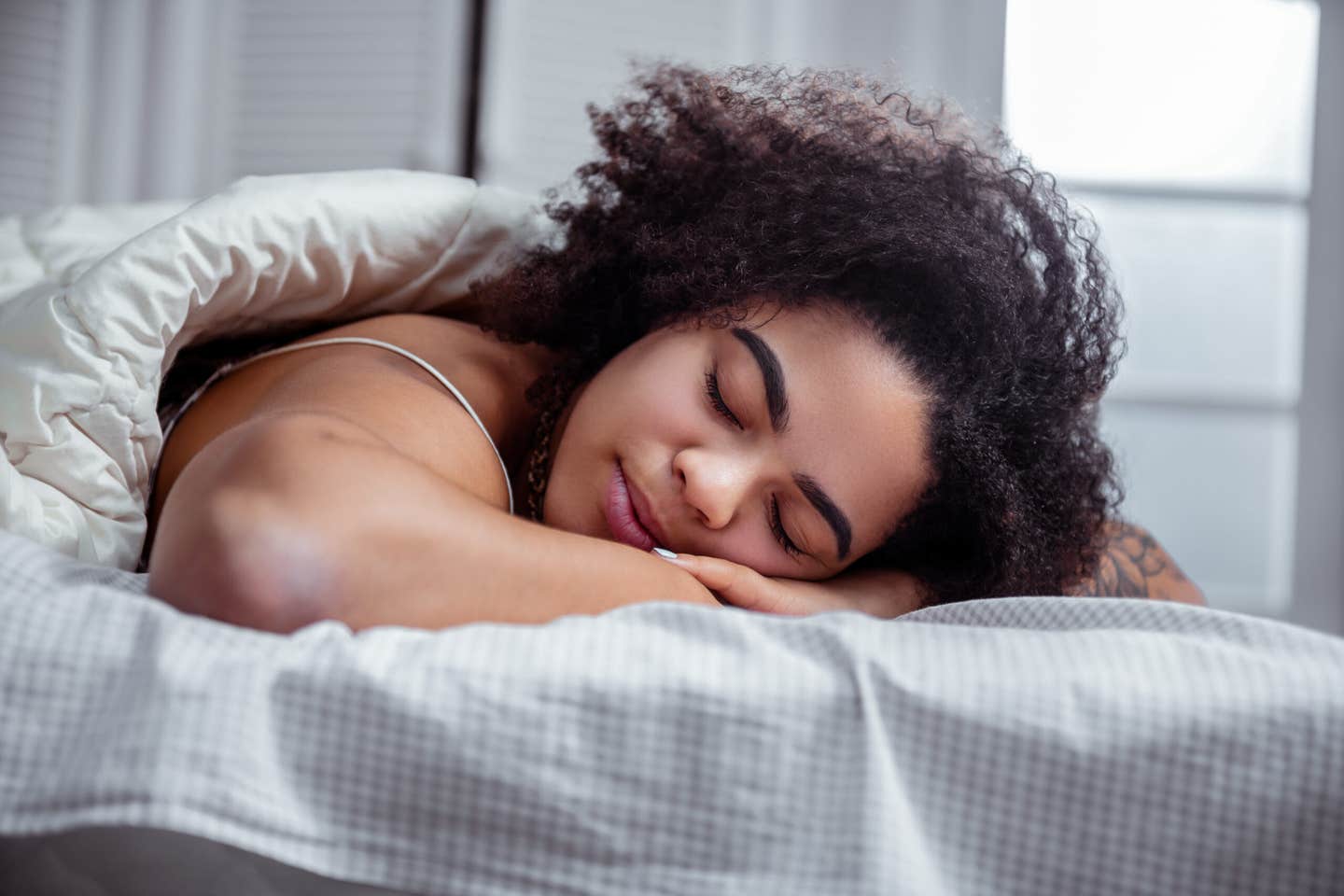An implantable, remote-controlled device can reduce sleep apnea
An implantable, remote-controlled device has provided a newer option for patients who fail sleep apnea therapies since it was introduced.

[Apr 24, 2022: Ryan Jaslow, Massachusetts Eye and Ear Infirmary]
Hypoglossal nerve stimulation is an implantable, battery-powered device that is surgically placed under the skin above the chest. (CREDIT: Inspire Medical Systems)
Obstructive sleep apnea (OSA) affects roughly 10-20 percent of Americans, causing sufferers to wake up tired and groggy. OSA can also significantly increase risk for serious long-term health problems. A newer treatment option of implanting a battery-powered device to open the airway may provide an effective option for people who have difficulties with conventional therapies, like continuous positive airway pressure (CPAP) therapy.
Untreated sleep apnea tied to major health woes
In OSA, the upper airway becomes intermittently blocked, limiting the amount of air that can reach the lungs during sleep. This reduces oxygen and disrupts sleep, raising risk for long-term health problems including heart attacks, heart failure, arrhythmias, strokes, high blood pressure, diabetes and early dementia.
OSA sufferers are typically diagnosed by a sleep study that measures their hourly sleep breathing disturbances, or Apnea Hypopnea Index (AHI). Severe sleep apnea is an AHI of 30 or higher.
The first-line therapy prescribed to affected individuals with moderate-severe OSA is CPAP. Each night, users wear a mask that is hooked up to a hose and a machine that delivers positive air pressure through the nose and/or mouth to open the airway. While it is the single most effective therapy, some studies show that up to 75 percent of people discontinue CPAP within the first 5 years of use.
Inability to tolerate CPAP may lead patients to consider second-line therapies. These include positional therapy, such as sleeping on your side or stomach, lifestyle changes like weight loss, oral appliances, and some surgical procedures. A newer therapy option, called hypoglossal nerve stimulation, has been used increasingly since it was approved by the FDA in 2014 for moderate to severe sleep apnea.
Related Stories
Remote-controlled device may be “game changer” for some
Hypoglossal nerve stimulation is an implantable, battery-powered device that is surgically placed under the skin above the chest. The device, called Inspire Upper Airway Stimulation (Inspire Medical Systems©), is connected to the nerve that controls tongue movement. Users turn on the device before bed with the use of remote control, otherwise there is no device on the face or in the mouth.
During the night, the device moves the tongue slightly forward with each breath, relieving the obstructive event causing sleep apnea. Some studies have found this treatment can lead to a 79 percent reduction in sleep apnea events.
The implant surgery is done through three incisions in the skin and lasts about two to three hours. (CREDIT: Inspire Medical Systems)
“This procedure can be a game-changer for some patients who have failed other therapies,” said Dr. Huyett. “In a perfect scenario, a patient will do well with CPAP, but unfortunately a subset do not. Then, we need to explore other options to prevent OSA from worsening a patient’s health and improve sleep quality.”
The implant surgery is done through three incisions in the skin and lasts about two to three hours. Patients go home the same day. After one month to allow the incisions to heal, Dr. Huyett turns on device to a minimal setting and teaches the patient how to use the remote.
Slowly over three months, the setting is increased until snoring and symptoms go away. A follow-up in lab sleep study is done where the device is fine-tuned, followed by an at-home sleep study three months later.
The battery lasts about 11 years until it needs to be replaced. The device is adjustable and removable if a patient is not benefiting from therapy and/or decides it’s no longer for them. The surgical risks are minimal as is the post-operative pain; most patients use acetaminophen or ibuprofen.
Before considering the device or additional treatment options, patients must have tried and failed CPAP, then need to make an appointment with a sleep specialist to undergo further testing, such as a sleep endoscopy.
“A key thing that stands out is that people’s sleep efficiency is low, that is, their sleep is heavily fragmented,” Schilbach says. “They have extremely few periods experiencing what’s thought to be the restorative benefits of deep sleep. … People’s sleep quantity went up due to the interventions, because they spent more time in bed, but their sleep quality was unchanged.”
That could be why, across a wide range of metrics, people in the study experienced no positive changes after sleeping more. Indeed, as Schilbach notes, “We find one negative effect, which is on hours worked. If you spend more time in bed, then you have less time for other things in your life.”
On the other hand, study participants who were allowed to nap while on the data-entry job did fare better in several measured categories.
“In contrast to the night sleep intervention, we find clear evidence of naps improving a range of outcomes, including their productivity, their cognitive function, and their psychological well-being, as well as some evidence on savings,” Schilbach says. “These two interventions have different effects.”
Note: Materials provided above by Massachusetts Eye and Ear Infirmary. Content may be edited for style and length.
Like these kind of feel good stories? Get the Brighter Side of News' newsletter.
Tags: #New_Innovations, #Technology, #Sleep, #Apnea, #Science, #Medical_Good_News, #Implant, #Stimulation, #The_Brighter_Side_of_News



